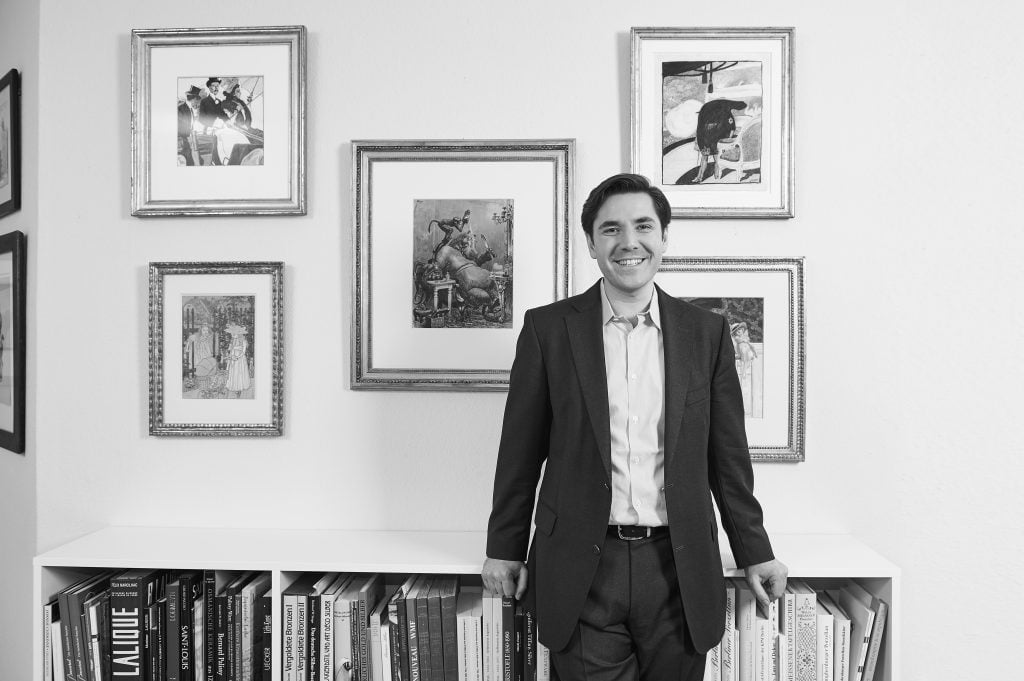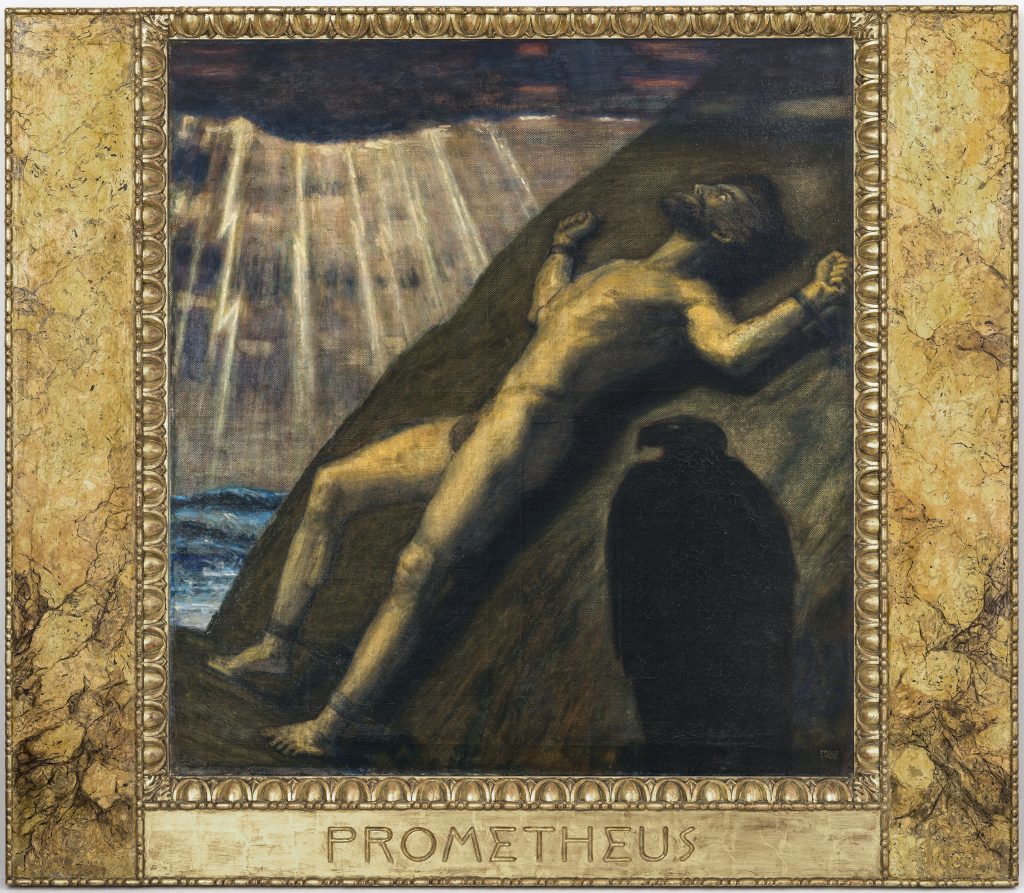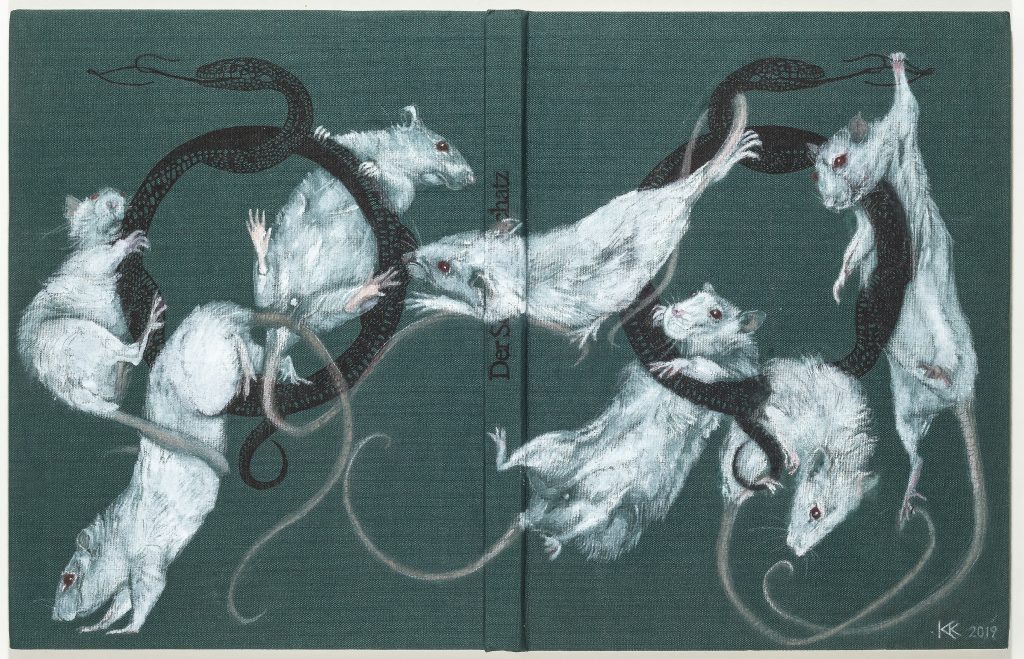German Gallerist Alexander Kunkel On Why He Thinks Boutique Fairs Will Thrive In Years to Come


Sophie Neuendorf

Even though the jubilance associated with art world has been more subdued lately, as artists, gallerists, and collectors are adjusting to the ripple-effects of COVID-19, some are seeing it as an opportunity to grow and evolve.
German gallerist Alexander Kunkel of Kunkel Fine Art believes the solutions may be in an online offering, government assistance for the arts, and boutique art fairs with a global view.

Franz von Stuck, Prometheus (circa 1926). Courtesy of Kunkel Fine Art.
It seems that this moment marks a turning point in the course of history, after which much will be radically different. How do you think this is reflected in the art market?
The joie de vivre often associated with the art world is gone, at least not for the near future, as the art world evolves as a consequence of this global crisis. Speculative buying has also decreased and there’s a renewed focus on substance and real quality.
Additionally, art fairs are vital for the survival of the market, especially in times like these. It is of critical importance for the trade and for all of the many jobs associated with it; from mounting to shipping to insurance. It would be devastating for the art trade and, above all, for our culture if art fairs ceased to exist. The ripple effects would be an immense, priceless, cultural loss.
Politicians have to finally acknowledge the importance of the art market in terms of the culture we support for future generations. In Germany, for example, 97% of Academy of Arts graduates cannot support themselves financially as artists. The state must do more for our artists, it’s imperative for our culture.
Times of social unrest and upheaval have, historically, been well-documented by artists of the time. How do you think artists will respond to this unique time in history?
Existential questions have always been important for the arts. It started many hundreds of years ago with cave paintings. The most prominent example is, quite possibly, religious art of the Middle Ages. Times in which humanity is “too comfortable” often give way to a sense of meaninglessness. Thus, a crisis, even though it’s awful and frightening, does force one to remember the essence of life. This is also reflected in today’s art.

Kristin Kolb, Der Schatz (2019). Courtesy of Kunkel Fine Art.
Your focus is on 19th and 20th-century paintings and drawings. How do you choose contemporary artists to juxtapose them with?
In my opinion, skilled craftsmanship has and always will be of the utmost importance. The subject-matter is also decisive. To me, it’s essential that the artists I’m juxtaposing are asking similar questions within their oeuvre. Are they contemplating and resolving similar issues?
Which contemporary artists do you think will have a lasting impact on art history?
Gerhard Richter, of course, is a given. Karin Kneffel will also prove to be important for posterity.
Many galleries have had to postpone their exhibitions and projects or move them online. What steps have you taken during this unusual time?
Gallerists, fairs, and private collectors have realized very rapidly that it’s critical to embrace the online art market in order to survive our current global crisis. I, too, am dealing much more online.
Additionally, I’ve invited several of my clients to private views of the gallery. Not only in order to respect the government’s social distancing guidelines but also because I feel that they enjoy the intimacy and tranquility that an exclusive viewing offers. Obviously, I’ve been very careful about which clients to invite. The virus has affected everyone to different degrees. It would be insensitive to invite someone who is suffering from health or financial difficulty.
It also has to be mentioned that, no matter our online advances, digitalization cannot replace a conversation in person. The enthusiasm and ideas generated by viewing art in person just don’t readily translate online.
Many art fairs have moved this year’s fairs online. As a participant and creator of Munich Highlights fair, do you think that this will be the norm in the future?
We actually enjoy several advantages that other larger fairs may not have. All of our most important exhibitors and clients are from Germany, or neighboring countries. These are all economically stable countries, regardless of our current crisis. Furthermore, we don’t have to contend with travel restrictions, which is a huge advantage. The fair is truly European.
However, because of social distancing guidelines, we cannot welcome as many visitors to the fair as in previous editions, a restriction that may obviously affect sales. However, we will work closely with exhibitors to find a solution that everyone is happy with, for example, online viewing rooms.
Let’s be optimistic and imagine that we can go back to normality this autumn. What projects do you have planned for that time?
I hope that Berlin’s Positions art fair will proceed as planned. Then, of course, Munich Highlights fair as well.
Pandemic permitting, I may open an exhibition of works by Kristin Kolb before Christmas. Her oeuvre centers primarily around animals and juxtaposes the Contemporary presentation of them with that of the 19th century.
To be honest, many of my colleagues at other galleries have planned excellent exhibitions but are postponing them to a time when art lovers can actually enjoy them without fears of infection. Hopefully, that day will arrive very soon.
If you could have dinner with any 3 artists, living or dead, who would you choose?
Nineteenth-century artists are my real passion and some of them can be seen as very relevant to our current global situation. For example, Franz von Stuck, who was a self-made man.
Käthe Kollwitz should also be a guest, given that her work is very current; I am referring to its subject matter, which is social criticism.
Another very topical artist was Theodor Heine, who brilliantly portrays the fragility of time.